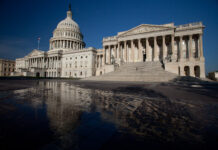The cost of living in the United States has risen by 6.2% in the last year, the fastest increase for more than thirty years. It is believed that the cost of fuel and food is what is primarily driving the increases.
In October, the consumer price index was 6.2% higher than the same month last year. It has also increased from 5.4% in September. The impact of the pandemic is still having a huge effect on inflation.
According to the Bureau for Labor Statistics, the items having the biggest effect on the rise were food, fuel, shelter, and the price of both new and used cars. The price of gasoline is the highest it has been for seven years.
The only two areas that did not see any increase were alcoholic drinks and airfares.
There are a number of factors that are thought to be behind this steep rise in prices. The supply chain has been affected by staff sickness during the pandemic, as well as a shortage of drivers. This has led to bottlenecks in the chain and an increase in demand.
Demand for certain goods and services has also increased as the economy began to gradually reopen as the vaccination program was rolled out.
Staff shortages have been a problem for many sectors in recent months. This has led to an increase in wages and companies may pass these increases on to their customers in the form of higher prices.
Joe Biden has said that he is making tackling rising inflation a priority. However, the Federal Reserve is taking a more laidback approach. It believes that the current rate is only ‘transitionary’ and that it won’t remain this high. It is not expected to announce an increase in interest rates in the near future.










